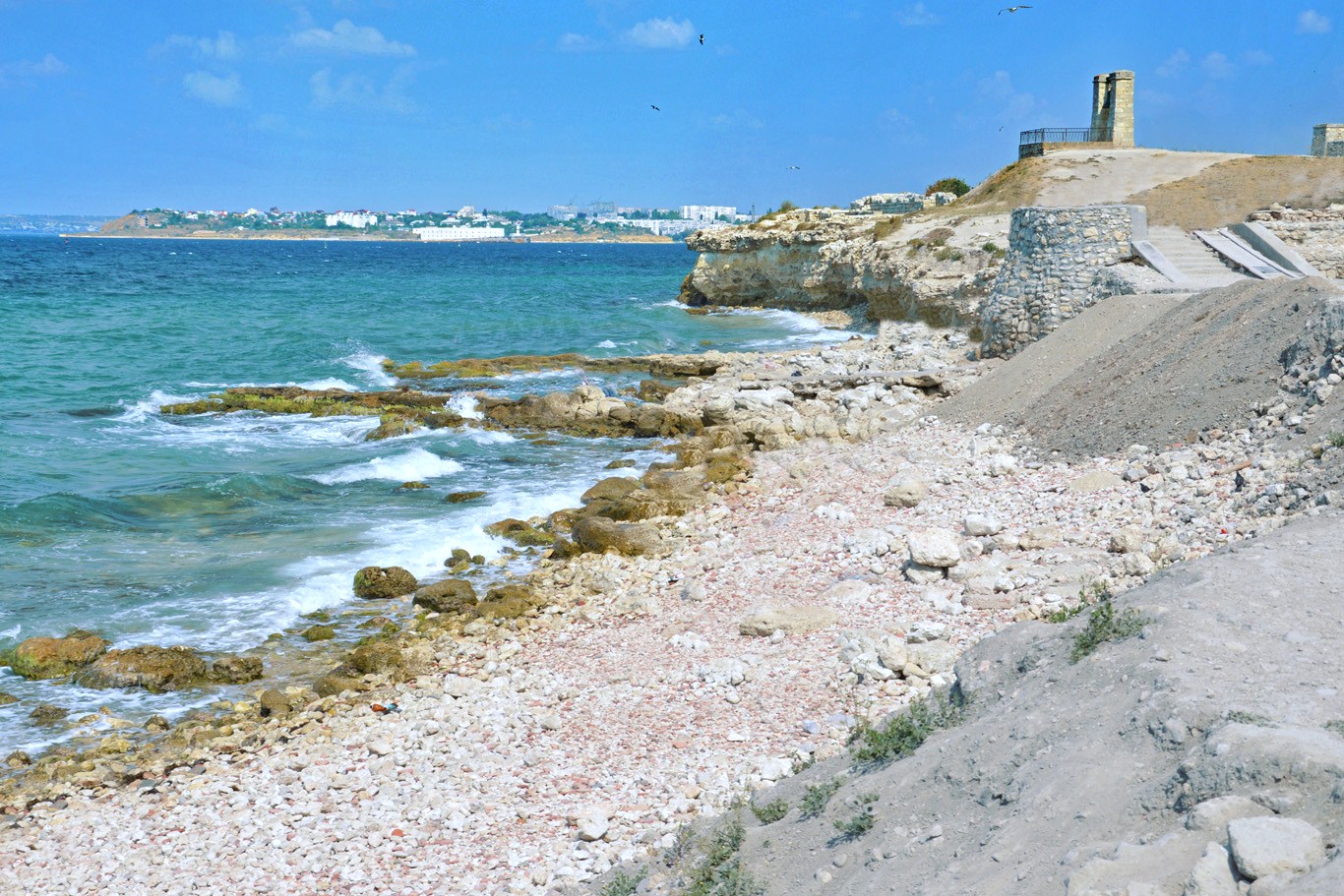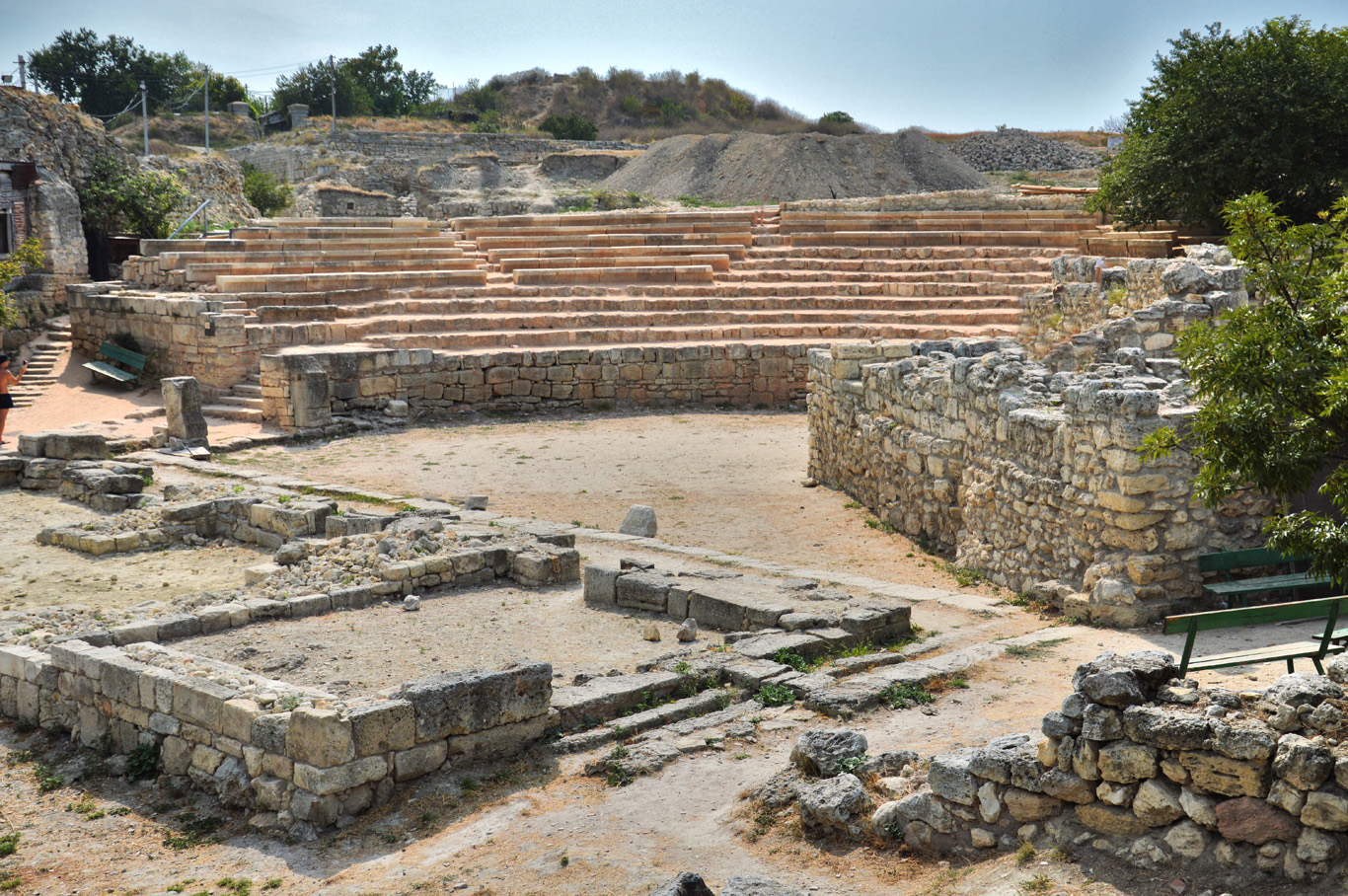When you think about the Ukraine, the first thing that usually comes to mind is the economic instability, political problems, bad roads, or... nothing at all. For most Westerners, even after Euro 2012 Championships, the Ukraine still remains a black spot on the map of Europe. A place completely unknown, so close and yet so far. Few people from the west choose it as a holiday destination. And if you are looking for a little adventure, it would be a perfect place for you.
When I started to explore the Ukrainian land, many things surprised me really positively, although some confirmed the stereotypes about the post-soviet countries. Anyway, Ukraine still remains one of my favorite destinations. Before I visited Crimean Peninsula I had no idea there were ruins of Ancient Greek settlements in Ukraine. Eastern European countries are mainly associated with gray, heavy apartment blocks and not with the sophistication and beauty of the ancient architecture. Sevastopol, to some extent (apart from the beautiful promenade by the sea) is heavy, coarse and gray indeed, yet the ruins of Chersonesus (or Chersonesos) give it a nice touch.
Blue waters of the Black Sea in Sevastopol
Sevastopol
Navy Ships in Sevastopol
Sevastopol Bus Station
Sevastopol Promenade
Sevastopol Promenade
Sunset in Sevastopol
Sevastopol Promenade at the sunset
Sevastopol at night
Sevastopol at night
Sevastopol at night
How to get to Sevastopol
From Kiev, to get to Sevastopol (or anywhere in Crimea), you can choose between an overnight journey (16 hours) by train or a flight from Kiev Boryspil Airport which is around 1 hour long. Of course, the train is the most popular option and would cost only about 20 EUR (26 USD) in a second class compartment. For the first class, you have to pay around 75 EUR (100 USD). The trains are usually comfortable and it's nice to travel overnight, you can save on accommodation. From anywhere in Crimea (for example Yalta or Simferopol) it's very easy to travel to Sevastopol, there are a lot of buses that run between those cities many times a day. Due to lack of time I was forced to take a plane and I regret it a little. There are no cheap airlines in the Ukraine like in Europe and for the domestic return flight from Kiev to Sevastopol I paid 280 USD. Almost the same as for the flight from London to Kiev.
How to get to the city from Sevastopol airport - Ukrainian Adventure
I noticed the difference between traveling in the West and in the Ukraine straight away at Kiev Airport waiting for the departure to Sevastopol. Firstly, I realized that ordinary people are unlikely to travel by plane. The other passengers seem to belong to the "high class" and, next to their necks full of golden chains, jewelry and other sparkling things as well as designer clothes, I felt a bit awkward as the only backpacker in their company.
The little propeller plane that took us to Sevastopol was brand new and the flight was smooth, nice and on time. After landing, we had to wait beside the runway while the airport staff took the luggage and transferred and placed it on the floor next to the terminal entrance. The airport was really tiny, smaller than most of bus stations. It was situated beside the military base where special airplanes were flying back and forth above our heads.
Now, I just had to find out how to get to the city. It turned out to be quite a big problem. First, the airport is literally in the middle of nowhere. There are no buses nearby and when taxi drivers heard I speak English, they demanded 30 EUR (40 USD) for the ride to Sevastopol. I refused and went to the airport to ask for information about any bus to the city. In very broken English, I was instructed to walk straight down the only road from the airport until I get to the bigger, main road, turn left and wait just there. It was really hot and I had no idea what to do now or if I'm waiting in the right place (there were no bus stops or anything like that) or which bus I should take. Thankfully, one more passenger who had arrived on the same flight came to the spot where I was standing. He was a local who came from Denmark so he spoke very good English, he showed me which bus to take - for 2 Ukrainian Hryvnia (UAH) which is 0.20 EUR (0.30 USD) and what to do after the bus arrives at its destination.
Sevastopol is located around a huge bay and the bus reached only the waterfront on one side. To get to the other side, where the city center is, I had to take a ferry for another 2 UAH. I enjoyed that ferry ride, the views were beautiful, the water in the sea clear and blue, however the area was much drier and dusty than in Yalta, which is lush green and only 80 kilometers (50 miles) away.
Finding accommodation in Sevastopol
I got off the ferry and finally reached the beautiful promenade in the center of Sevastopol. However, the problems were not over yet. Now, I had to find where my hotel was. Accommodation in Ukraine is not very pricey but the idea of hostels (with the exception of Kiev) is practically unknown. That said, Crimea is more expensive and, for example, accommodation in Yalta is really overpriced.
Luckily, in Sevastopol I managed to book a very nice hotel room which looked like a ship cabin for about 20 EUR (26 USD) per night. The only problem was that the map on the booking website wasn't accurate. I booked it because I thought it would be in the center, and it wasn't. In Crimea, literally no one speaks any English, even in tourist points that sell tours and trips, so it was really hard to get directions. When I finally got to the place on the map, it turned out it was wrong and the hotel was on the other side of the city... A thunderstorm came and I had to, with all the bags, travel on the marshrutkas (public transport mini vans - you must try them while visiting Ukraine!) Asking the driver where to stop was useless, even if you show him a piece of paper saying in Russian the name of the stop. He just seemed not to give a damn. Thankfully, some fellow passengers were really nice and even offered to walk me to the address of the hotel.
Sevastopol airport - in the middle of nowhere
The place where the bus to the city center stops
Visiting Sevastopol - The Promenade
The promenade by the sea seems so beautiful and colorful in contrast to the gray, messy and chaotic inner part of the city. In the summer evening, there are hundreds of people strolling around, mainly tourists, however you probably won't meet anyone from the West. 90 percent of them are probably Russians. If you buy a tour or a trip (which might be difficult in English) remember that the only language the guide will speak is Russian. Sometimes, some of the people at the tourist points seemed to feel an aversion to me when I just wanted to ask for directions when they heard English. However don't let it discourage you as Russian culture is more reserved and straightforward than western. At times, it might seem a bit harsh for someone visiting this area for the first time.
In Sevastopol, as well as in all Crimea I ate one of the best meals at very affordable prices. Everything was fresh, made of natural ingredients. At night the city is bustling with life, then you get a feeling as if you were in some tropical place, not in a "cold" former USSR state.
Sevastopol as a navy base
Sevastopol was founded in the eighteenth century as a navy base for Russian army. While walking down the promenade, or taking the ferry to get to the other side of the bay you will notice many huge military ships around. If you are interested, try to get a trip around the Balaklava Bay or visit one of the military museums. There are a lot of points where you can get the tours, however, unfortunately, only in Russian.
1935 Basilica in Chersonesus
Ruins in Chersonesus, Basilica of St. Vladimir in the background
Chersonesus
Chersonesus
Chersonesus
Black Sea at Chersonesus
1935 Basilica in Chersonesus
Chersonesus - "Foggy Bell" - 17th century
Ruins in Chersonesus
Ruins of the amphitheater
Birds at the seaside
Beautiful detail
St. Vladimir Cathedral in Chersonesus
St. Vladimir Cathedral
In the cathedral
Chersonesus - Ukrainian Pompeii
Chersonesus, the only that large and important archaeological site in Ukraine, is sometimes called "Ukrainian Pompeii". It was founded in the sixth century BC by the settlers from Heraclea Pontica (today Turkey). The Crimean Peninsula was called then "Taurica" by the ancient Greek and Romans. The history of Cheronesus is pretty turbulent. In the second century it fell under Bosporan Kingdom. Then, it was took over by the Byzantine Empire. It was used, due to its remoteness as an observation point and a place of exile for those who angered Roman authorities. Byzantine control lasted until the 10th century. After that it was a part of Kievan Rus for several centuries until the fourth crusade when it was taken over by Genoa. Finally, it was destroyed and abandoned in the 14th century having had suffered a Mongol invasion.
Nowadays, visitors can admire the ruins of this ancient city with the influences of Greek, Roman and Byzantine cultures. The most magnificent monument is the 1935 Basilica (it was named after the year in which it was opened for the public).
Unfortunately, because of the modern development and the lack of funds to prevent the coastal erosion, the site of Chersonesus is at risk of loss and destruction.
Chersonesus Cathedral (Saint Vladimir Cathedral)
The cathedral overlooking the ruins of Chersonesus commemorates the place of Saint Vladimir's baptism which supposedly took place in the 10th century. It had been finished in the 19th century but it was destroyed during the Second World War. It has been reconstructed recently and now is open for the public.
Chersonesus site is located in the suburban area of Sevastopol. It can be reached by the bus number 22 or marshrutkas 109 and 110. The fare is only 2 UAH (0.20 EUR, 0.30 USD).
The site is open from 9 AM until 7 PM in the summer season or until 5 PM in the winter.
The entry fee for foreigners is 60 UAH (5 EUR, 7 USD) + 15 UAH (1.30 EUR, 1.90 USD) for a camera.
If you liked this article, you can also download it via the GPSmyCity app - you will be able to gain access to the guide, which will direct you to all the attractions described above, even if you're offline. Download it here.
Related Posts
Copying without permission is not allowed. If you wish to use any of the site's content (photos or text) or work with us, please contact us.
We welcome questions, advice, support or criticism. However, spam comments will be removed.



































